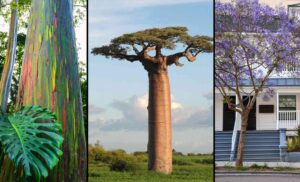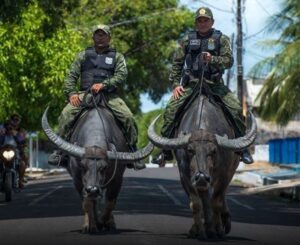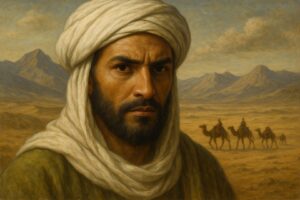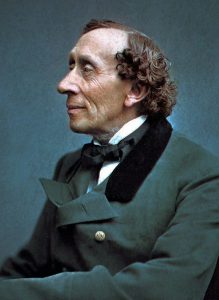Indian mythology stands as a rich in stories, fables, and legends that have captivated hearts and minds for centuries. Rooted in ancient scriptures like the Vedas, Puranas, and epics like the Mahabharata and Ramayana, Indian mythology is a reflection of the country’s diverse cultural tapestry and spiritual beliefs.
While rooted in antiquity, Indian mythology remains relevant in the modern world, offering valuable insights into human nature, relationships, and the eternal quest for truth and meaning. By delving into these ancient tales, we can gain a deeper understanding of ourselves and the world around us, bridging the gap between the past and the present.
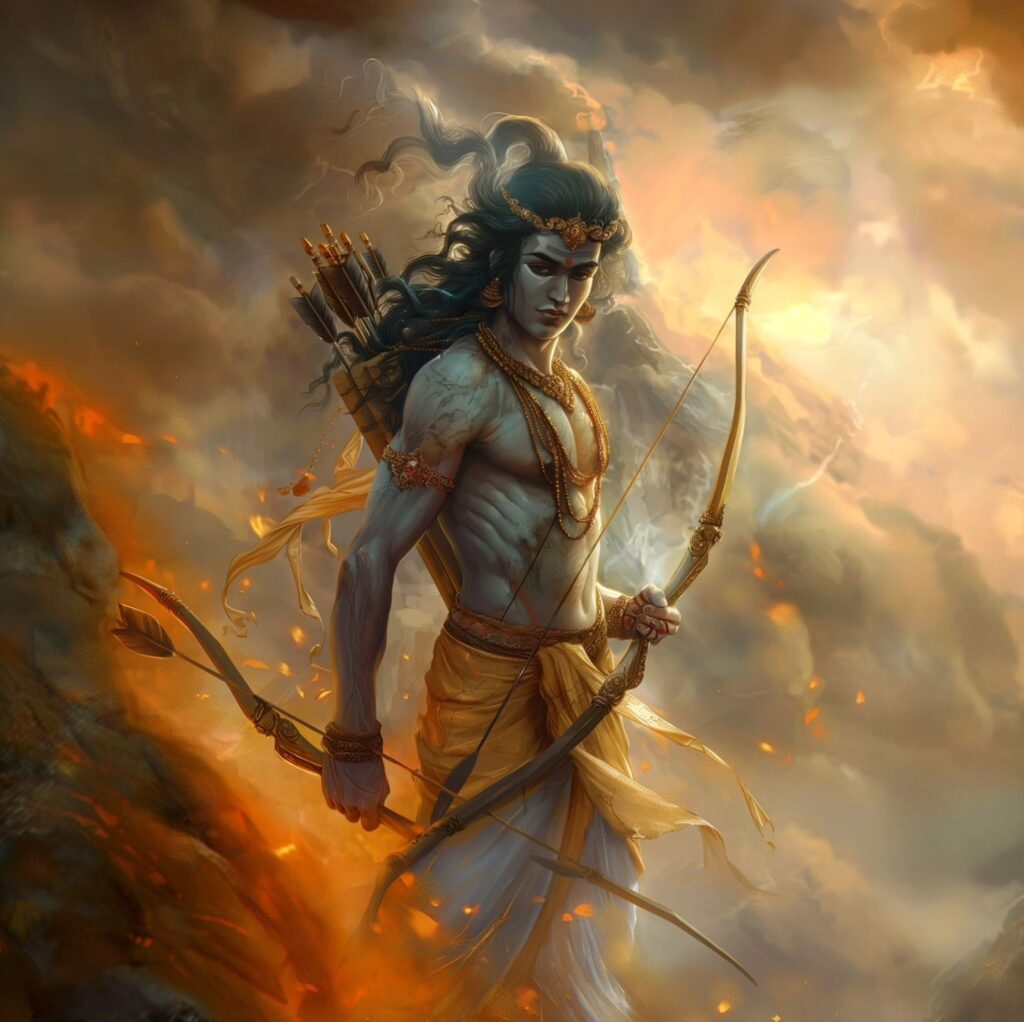 Pin
Pin Table of Contents
Origins and Significance of India’s Vibrant Mythological Universe
Indian Mythology is a vivid tapestry woven with stories of gods, goddesses, heroes, and mythical beings that have captivated people for centuries. The origins of Indian mythology can be traced back to ancient texts like the Vedas and Puranas, which laid the foundation for a rich and diverse mythological universe. These narratives delve into creation myths, explaining the origins of the universe and the cyclical nature of time.
In Indian mythology, gods and goddesses are not just deities to be worshipped but embody various virtues and qualities that humans aspire to. Each deity has a unique symbolism and represents different aspects of life, from love and wisdom to destruction and creation. The epics of Mahabharata and Ramayana stand as pillars of Indian mythology, imparting profound moral teachings and philosophical insights.
Gods and Goddesses in Indian Mythology
In Indian mythology, a vast pantheon of gods and goddesses play pivotal roles in shaping the universe and reflecting the myriad aspects of human life. Among the key deities are Brahma, the creator god who fashioned the world and all living beings; Vishnu, the preserver who maintains cosmic order and incarnates on Earth to restore balance; and Shiva, the destroyer who dissolves the universe to pave the way for new cycles of creation.
Goddesses like Lakshmi, the embodiment of wealth and prosperity; Durga, the fierce warrior goddess who protects against evil forces; and Saraswati, the goddess of knowledge and arts, are revered for their powers and virtues. Each deity symbolizes essential qualities and aspects of existence, offering devotees guidance, protection, and inspiration.
Epics of Indian Mythology: Mahabharata and Ramayana
The Mahabharata and Ramayana are two epic narratives that hold profound significance in Indian mythology and culture. The Mahabharata, attributed to the sage Vyasa, chronicles the Kurukshetra War between the Pandavas and Kauravas, delving into themes of duty, righteousness, and dharma. It includes the Bhagavad Gita, a spiritual discourse between Lord Krishna and Prince Arjuna, offering profound insights into life’s moral dilemmas and the nature of existence.
On the other hand, the Ramayana, attributed to the sage Valmiki, follows the journey of Prince Rama to rescue his wife Sita from the demon king Ravana. It explores themes of loyalty, sacrifice, and the triumph of good over evil. The epic is revered for its depiction of ideal leadership, devotion, and familial bonds.
Both epics serve as repositories of moral teachings, philosophical wisdom, and cultural values, inspiring generations with their timeless tales of heroism, love, and divine intervention. The Mahabharata and Ramayana continue to captivate audiences worldwide, embodying the rich tapestry of Indian mythology and folklore.
Sacred Texts and Scriptures in Indian Mythology
Sacred texts and scriptures hold a revered place in Indian mythology, serving as spiritual guidebooks that elucidate the values, beliefs, and cultural heritage of the Indian subcontinent. Among the most significant texts are the Vedas, the oldest scriptures that form the foundation of Hindu philosophy and rituals. These ancient texts contain hymns, rituals, and spiritual teachings that have shaped Hindu practices and beliefs for millennia.
The Upanishads, philosophical texts that explore the nature of reality and the self, delve into profound metaphysical concepts and spiritual truths. They emphasize concepts such as Brahman (ultimate reality) and Atman (the true self), paving the way for Vedanta philosophy.
Texts like the Bhagavad Gita, a part of the Mahabharata, and the Ramayana offer moral guidance, ethical dilemmas, and philosophical insights that continue to inspire millions worldwide. These scriptures in Indian mythology not only reveal the depths of spiritual wisdom but also reflect the rich tapestry of cultural traditions and narratives that define Indian heritage.
Mythical Beings and Creatures in Indian Lore
In Indian lore, a myriad of mythical beings and creatures grace the vibrant ancient tales and legends. Among them, the Apsaras dance elegantly as celestial nymphs, epitomizing beauty and charm while symbolizing the finer aspects of art and grace. These ethereal beings are celebrated for their celestial allure and their presence in the sacred texts and epics of Hindu mythology.
The Garuda, a magnificent bird-like creature revered as the divine mount of Lord Vishnu, symbolizes strength, speed, and unwavering loyalty. This legendary being embodies the virtues of courage and protection in Indian folklore.
Conversely, the Rakshasas stand as formidable demons characterized by their malevolence and shape-shifting abilities, often serving as antagonists in ancient myths, challenging gods and heroes alike.
The Nagas, serpent deities of half-human, half-serpent form, hold a complex position in Indian mythology, representing both benevolence and malevolence and dwelling in the depths of the netherworld. These serpent beings evoke reverence and fear, reflecting a balance of power and enigma within the cultural psyche of India.
In Indian lore, these mythical beings and creatures not only serve as fantastical elements in stories but also mirror cultural beliefs, showcasing the intricacies of human nature, aspirations, and divine connections that have transcended generations.
Significance of Rituals and Festivals in Indian Mythology - The Cultural Celebrations and Traditional Practices
Rituals and festivals play a pivotal role in Indian mythology, serving as bridges between the mortal realm and the divine. These sacred practices are deeply intertwined with ancient myths and legends, preserving cultural heritage and reinforcing spiritual beliefs.
Through rituals, devotees engage in symbolic actions that connect them to the cosmic order and invite blessings from deities. Each ritual holds specific significance, often rooted in mythology, symbolizing purification, renewal, gratitude, or seeking divine intervention.
Festivals, on the other hand, mark important mythological events, celebrating triumphs of gods and goddesses over evil forces or significant cosmic occurrences. They unite communities in joyous observances, fostering a sense of unity and shared beliefs.
These rituals and festivals not only strengthen individual faith but also reinforce broader societal bonds, passing down stories and traditions through generations, ensuring the endurance of Indian mythology’s rich tapestry in the fabric of everyday life.
Influence of Indian Mythology on Art and Architecture: The Artistic Expression Inspired by Mythological Themes
The influence of Indian mythology on art and architecture is profound and enduring, shaping aesthetic expressions across centuries. From intricate temple carvings to vibrant paintings, the myths and legends of India serve as a wellspring of inspiration for artists and architects.
In sculpture and paintings, deities, epic heroes, and mythical creatures are depicted with intricate details, capturing the essence of divine beauty and spiritual power. These artistic representations not only reflect the cultural ethos but also serve as visual narratives that convey moral, philosophical, and spiritual teachings embedded in mythology.
In architecture, temples and sacred structures are often designed based on mythological principles and cosmological beliefs. The layout, sculptures, and motifs in these structures are laden with symbolic meanings, representing the union of the earthly and the divine.
By integrating Indian mythology into art and architecture, artists and architects create immersive experiences that not only celebrate the rich tapestry of myths but also invite viewers to contemplate the timeless wisdom and beauty encapsulated in these stories.
Interpretations and Adaptations of Indian Mythology in Modern Context
The interpretations and adaptations of Indian mythology in the modern context have opened up new avenues for creativity and expression, bridging the ancient past with contemporary sensibilities. In literature, films, art, and popular culture, Indian myths are reimagined, reinterpreted, and often subverted to address modern issues and resonate with today’s audiences.
Authors and filmmakers draw inspiration from epics like the Ramayana and Mahabharata to create narratives that explore complex human emotions, societal dynamics, and ethical dilemmas relevant to the present times. These reinterpretations often provide a fresh perspective on age-old tales, offering insights into contemporary struggles and aspirations.
Artists and designers also incorporate elements of Indian mythology in their works, blending traditional motifs with modern aesthetics to create visually striking and thought-provoking pieces. By delving into the rich mythological heritage of India, creators infuse their art with a sense of cultural continuity while engaging with contemporary themes and concerns. Through these reinterpretations and adaptations, Indian mythology continues to evolve and resonate with audiences across diverse cultural landscapes.
Geographical and Historical Connections in Indian Mythology
Geographical and historical connections play a significant role in shaping Indian mythology, intertwining the physical landscape with ancient narratives and cultural heritage. Many Indian myths are rooted in specific regions, rivers, mountains, and cities, establishing a deep connection between the land and the stories associated with it.
The diverse geography of India, from the Himalayas in the north to the oceans in the south, provides a rich backdrop for mythological events and epic battles. Sacred rivers like the Ganges hold profound religious significance in myths and rituals, symbolizing purity, salvation, and the cycle of life.
Historical events and figures from India’s past often find their way into mythological narratives, blurring the lines between fact and legend. Kings, warriors, saints, and sages become characters in epic tales, embodying virtues, vices, and the complexities of human nature.
By exploring the geographical and historical dimensions of Indian mythology, we uncover a tapestry of stories that not only entertain but also educate, enlighten, and connect us to a shared cultural heritage that transcends time and space.
Impact of Indian Mythology on Global Popular Culture
Indian mythology has had a profound impact on global popular culture, influencing diverse mediums such as literature, films, comics, and video games. The rich tapestry of stories, characters, and themes from Indian myths has captivated audiences around the world, transcending cultural boundaries.
In literature, authors like Neil Gaiman, Amish Tripathi, and Jhumpa Lahiri have drawn inspiration from Indian mythology to create captivating narratives that resonate with readers worldwide. Films like “Baahubali” and “PK” have showcased Indian mythological themes to global audiences, garnering critical acclaim and commercial success.
The popularity of characters like Hanuman, Krishna, and the concept of reincarnation has been integrated into Western pop culture through comics, graphic novels, and video games, appealing to audiences seeking diverse and compelling storytelling.
The enduring appeal of Indian mythology lies in its universal themes of love, war, sacrifice, and heroism, which continue to inspire and captivate audiences across the globe, fostering a deeper appreciation for the cultural heritage and storytelling traditions of India.
FAQs about Indian Mythology
Indian mythology refers to a collection of traditional stories, legends, and religious texts that are an integral part of Indian culture and identity. These myths often revolve around gods, goddesses, heroes, and supernatural beings, offering insights into Indian beliefs, values, and traditions.
Some of the most famous Indian mythological epics include the Mahabharata, the Ramayana, and the Puranas. These epics are known for their elaborate narratives, rich symbolism, and moral teachings that continue to influence Indian society and culture.
Indian mythological stories have had a significant impact on modern culture, inspiring literature, films, art, and even fashion around the world. The timeless themes and characters in Indian mythology often find resonance in contemporary narratives and provide a source of creativity and inspiration for artists and creators.
Indian mythological stories are considered to be a blend of history, mythology, and folklore. While some events and characters in these stories may have historical roots, many elements are believed to be symbolic or mythical in nature, aimed at conveying deeper philosophical and spiritual truths.
There are various resources available for those interested in learning more about Indian mythology. One can explore books, documentaries, online courses, and visits to museums and historical sites in India to delve deeper into the fascinating world of Indian mythological tales.
















